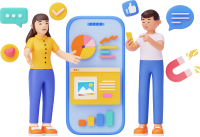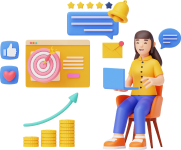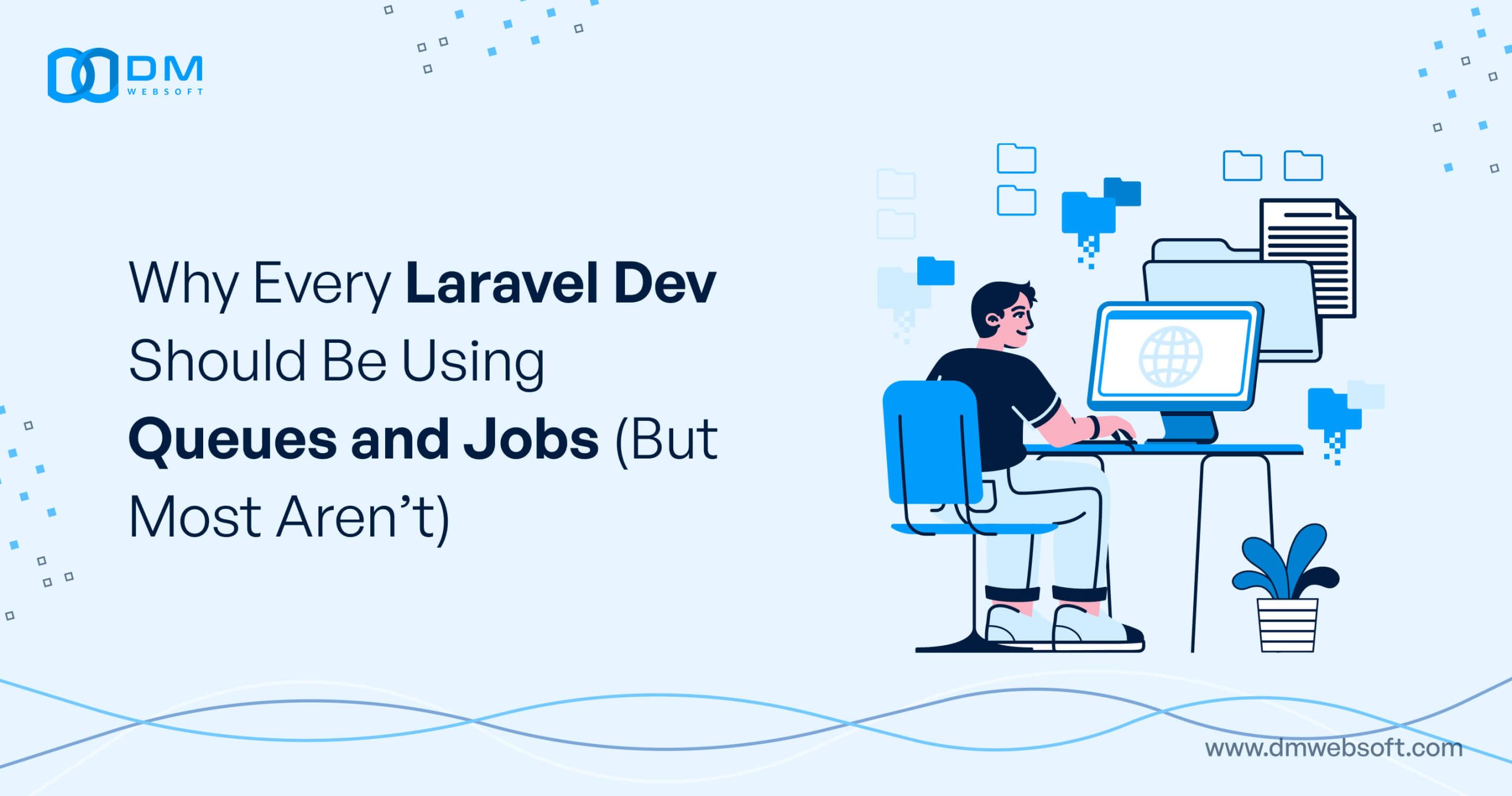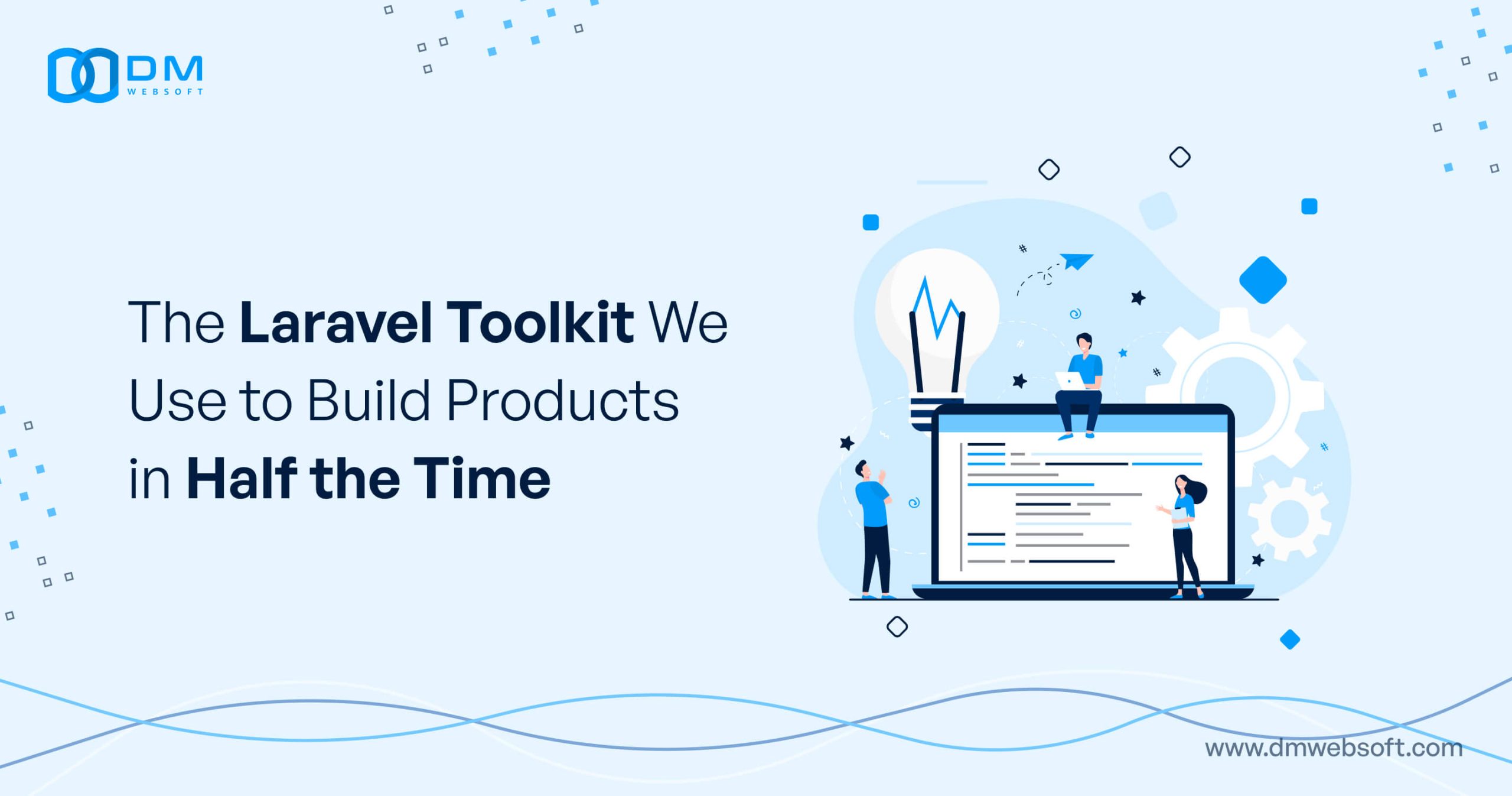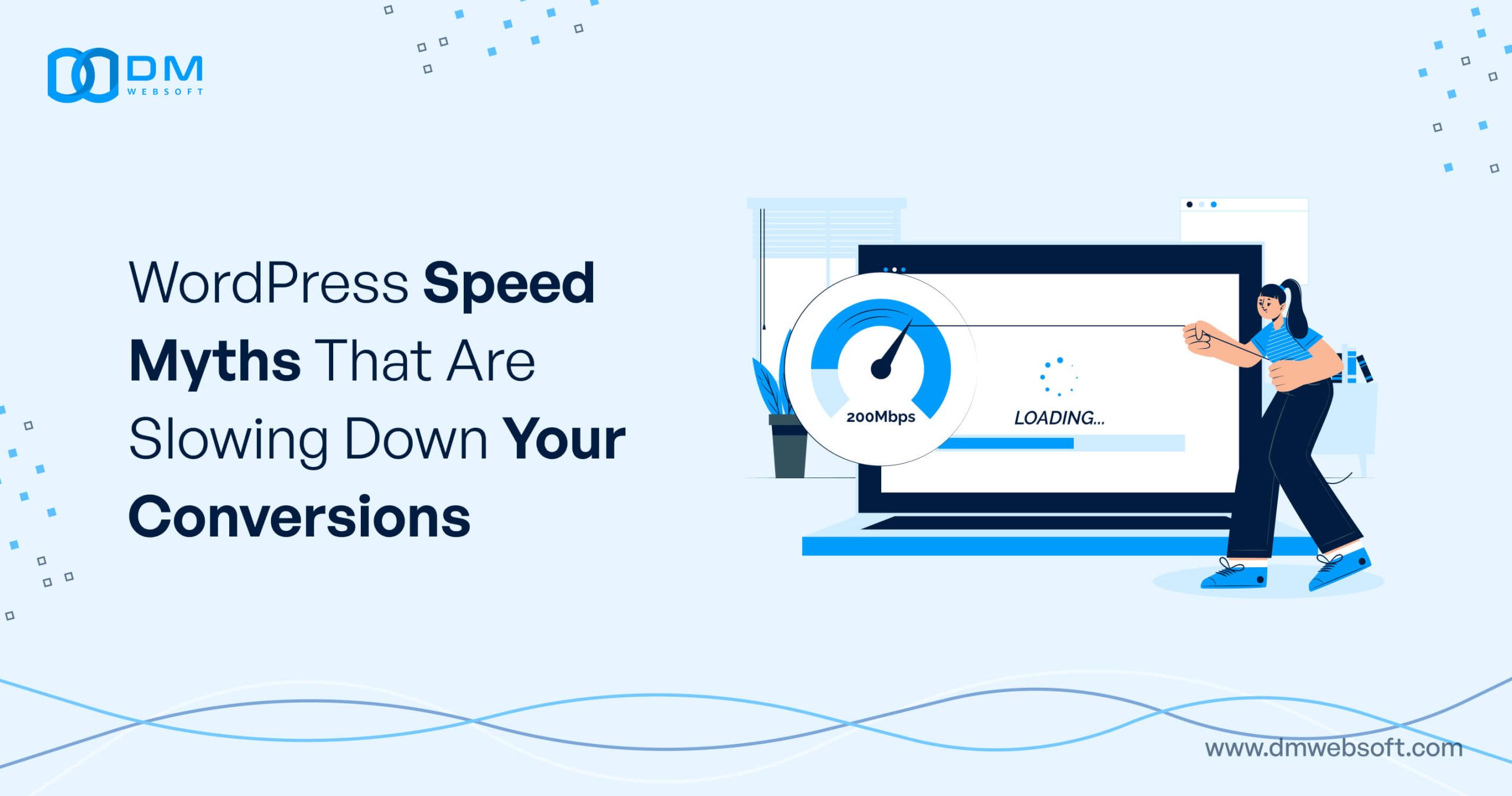DM WebSoft LLP exceeded our expectations! Their seasoned team of experts delivered a website that perfectly captures our brand essence. Their 15+ years of experience truly shine through in their exceptional web development skills.
Machine Learning in Educational Tech: Personalizing the Learning Experience

TABLE OF CONTENT
Introduction
The Evolution of Personalization in Education
Machine Learning in Education
Educational Technology Personalization
ML Personalized Learning: Case Studies
AI and ML in Enhancing Learning Experiences
Machine Learning Educational Apps
Challenges and Ethical Considerations
Conclusion
Call to Action
Get in Touch
Introduction
Just now, when technology and education are coming together more deeply, machine learning (ML) is finally making grand headways into educational technology, or edtech, towards the personalization of learning. This special way of education individualizes and customizes education and learning to the student, his personal needs, and how he learns, bringing into play an environment where individualized education is not possible but a reality. Now, under the impact of machine learning, educational technology is developing and becoming more adaptive and responsive. Thanks to this, now learning and teaching around the globe has become available, interesting, and effective for students. As we dig deeper into the innuendos of machine learning in education, we will see the potential as to how it can turn around traditional learning paradigms into paved roads in the future when learning is really learner-centered.
The Evolution of Personalization in Education
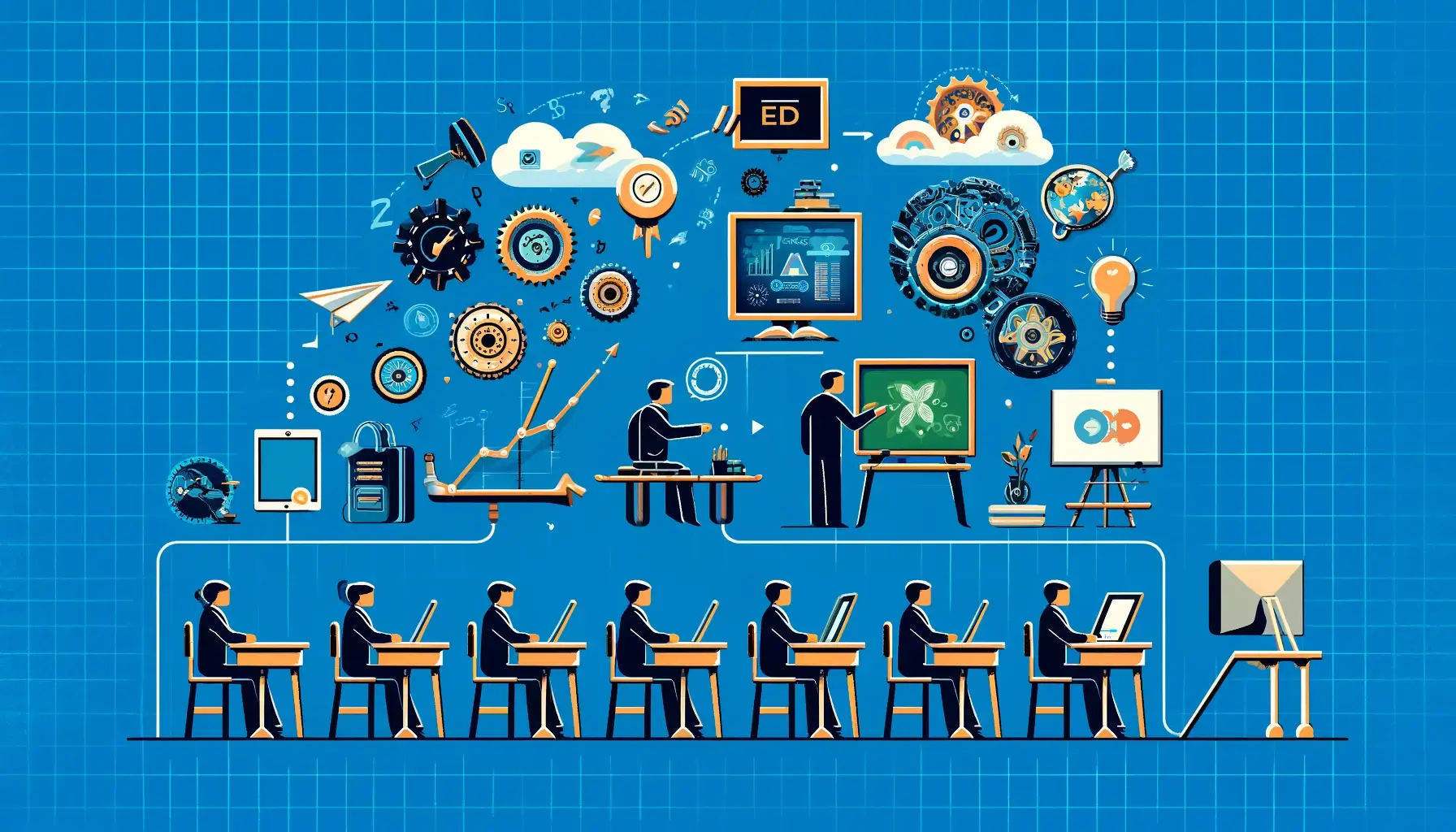
The journey toward customized education is a story of change and new horizons. Earlier, the education system was marked by a common approach in which differentiation of student needs, learning styles, and paces was quite commonly compromised in lieu of uniformity and standardization. The traditional model, with its set curricula and rather passive learning environments, most commonly either under-challenged or overwhelmed students, hence creating the discrepancies in educational outcomes that have previously been the focus of much academic debate.
From the late 19th and early 20th century on, however, the educational psychology and the progressive educational theories began to put their stamp on things—starting with a paradigm shift—that favored the student-oriented approach. Such were the basic and really revolutionizing ideas for individualized teaching, but limited by the technological and methodological possibilities of that time.
The Role of Technology All this was a matter of serious development only from the late 20th and early 21st centuries when technology started its pivotal role in education and imposed slowly the possibility for more individual learning.
The advent of computers and the internet in the classroom had promised the development of learning environments that are great and exciting, may better cater to individual differences in learning styles and needs.
What made the real breakthrough, however, was the introduction of machine learning to educational technologies. Machine-learning algorithms are able to process and identify patterns within huge datasets, and this capability gave new opportunities to adjust educational content and methods dynamically for every learner. This is where AI-driven personalization is able to take root; it lies in the ability to establish the current learning base a student has, their pace of learning, and even their preferred learning styles so that he can mold the educational content accordingly.
And yet, here we teeter on the brink of an educational revolution where learning experiences are not only tailor-made but, I would dare to venture, perhaps predictively interactive in extremis. It is not just a device but a collaborator in the learning process, bringing forth insights and support that were till now inconceivable. The future holds a learning landscape where education is going to be a tailor-made journey for every student, hence opening up the complete potential of ways that were heard of until now.
This shift from standardized to personal is symptomatic of a far wider trend toward increased acceptance of diversity in learning and an appreciation that the future of education is in using technology for individual educational requirements. As we study and integrate these technologies in our educational practice, we may be one step closer to a world in which the learning experience for every learner is as unique as a fingerprint and hence to more inclusive, equitable, and effective education systems.
Machine Learning in Education
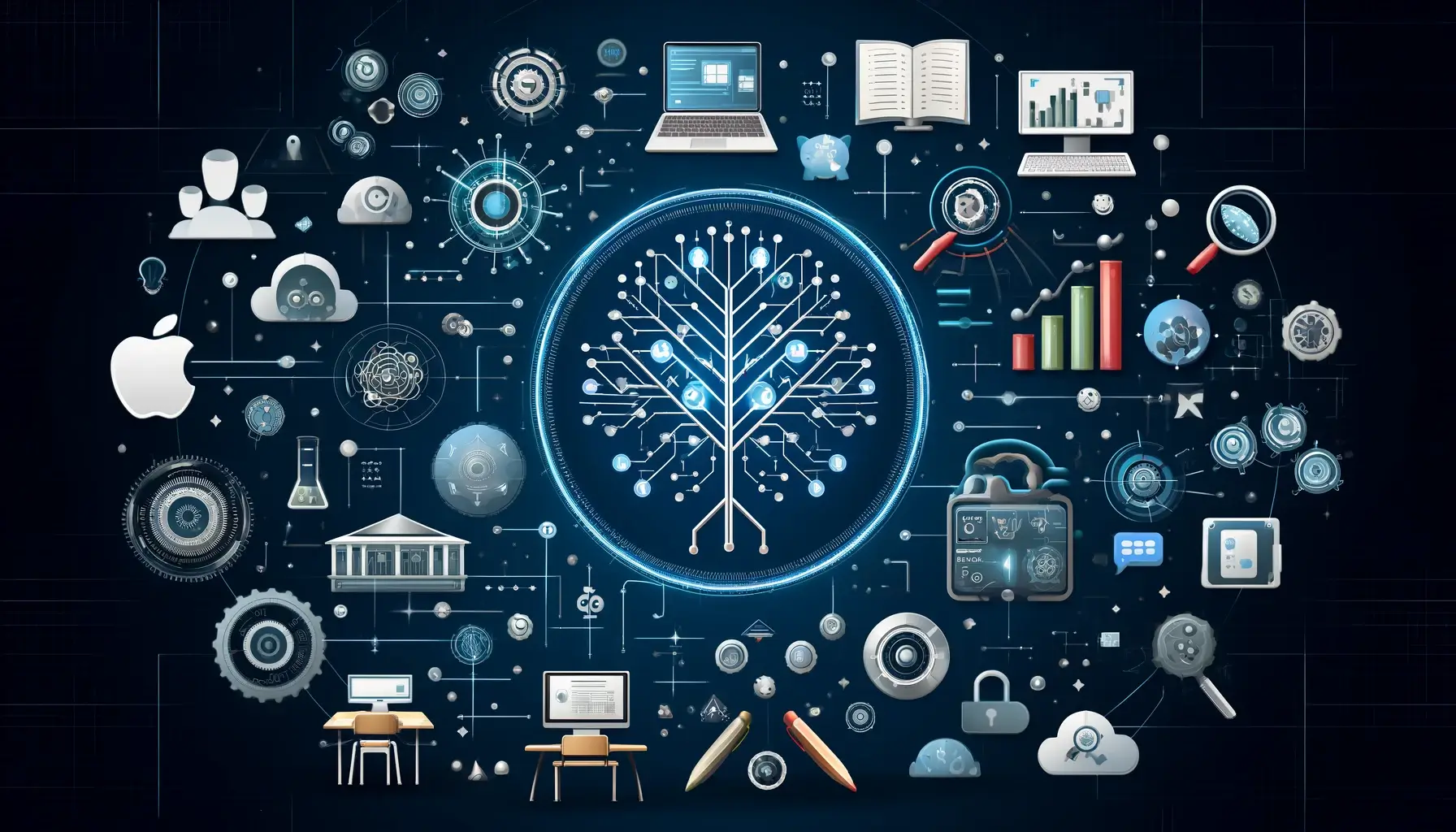
The much-needed amalgamation of Machine Learning (ML) with Educational Technology would be revolutionary innovation rather than advancement; it will redefine the horizons of personalized learning. ML is algorithm and data-based learning; it imitates the way human beings learn, but with increasing accuracy and learning performance step by step. In the terms of education, that would mean being able to deliver learning experiences strongly individual and evolving in real time with every student.
Understanding Machine Learning
Machine learning involves the use of algorithms to, for example, recognize patterns within large sets of data. For instance, these data sets may include anything from statistics on student performance and the engagement level to settings on learning mediums and pacing within the education environments.
The algorithms use the data to dissect the best ways of teaching for individual students, hence customized content in education according to particular needs of each student.
Adaptive Learning Systems
Adaptive learning systems are one of the most powerful applications of ML in education. These platforms use machine learning to modify the content, difficulty level, and learning paths to the input performance and engagement from the learner. Such systems could flag the areas that the learner finds difficult and provide still more resources or change the method itself in order for the student to understand and learn effectively with reduced frustration.
Personalized Feedback and Assessment
It changes feedback and assessment radically, too. In traditional assessment and testing, where the inescapable one-size-fits-all rule prevails, ML-enabled systems can devise dynamic tests adapting to the level of knowledge of the student, allowing for rather precise measurements of understanding and advancement.
It, therefore, leads to immediate and individualized feedback, which actually guides students through their learning path by giving exact, constructive, and timely inputs.
Enhancing Engagement Through Gamification
Engagement is one of the most important components in effective learning: it may be improved with the help of ML using gamification in addition to interactive content. In case the ML is authorized to have its way, its algorithms may select from the learning material what interests the student most so that education would be both effective and fun.
Preparing for the Future
Its application in education prepares the students for a future world in which technology and data analysis through ML are omnipresent. In addition to learning from ML-powered educational tools, students also get a chance to practice important digital literacies skills while preparing for a entry into a more digital world. The Role of Educators The roles of teachers in this new educational environment have also changed. Now, the teachers have armed themselves with insights from data that allow them to focus on facilitating learning rather than administration.
Freeing educators from this takes them away from the largely ineffective, stand and deliver lecture to better, more interactive, hands-on teaching. It is, therefore, with machine learning that the light continues to be more focused than before on the path of the personalization of the education towards more adaptive, engaging, and effective learning experiences. Thereby, teaching and learning with the growth in technology will follow the same path to keep up with this promise of education designed for the learner.
Educational Technology Personalization
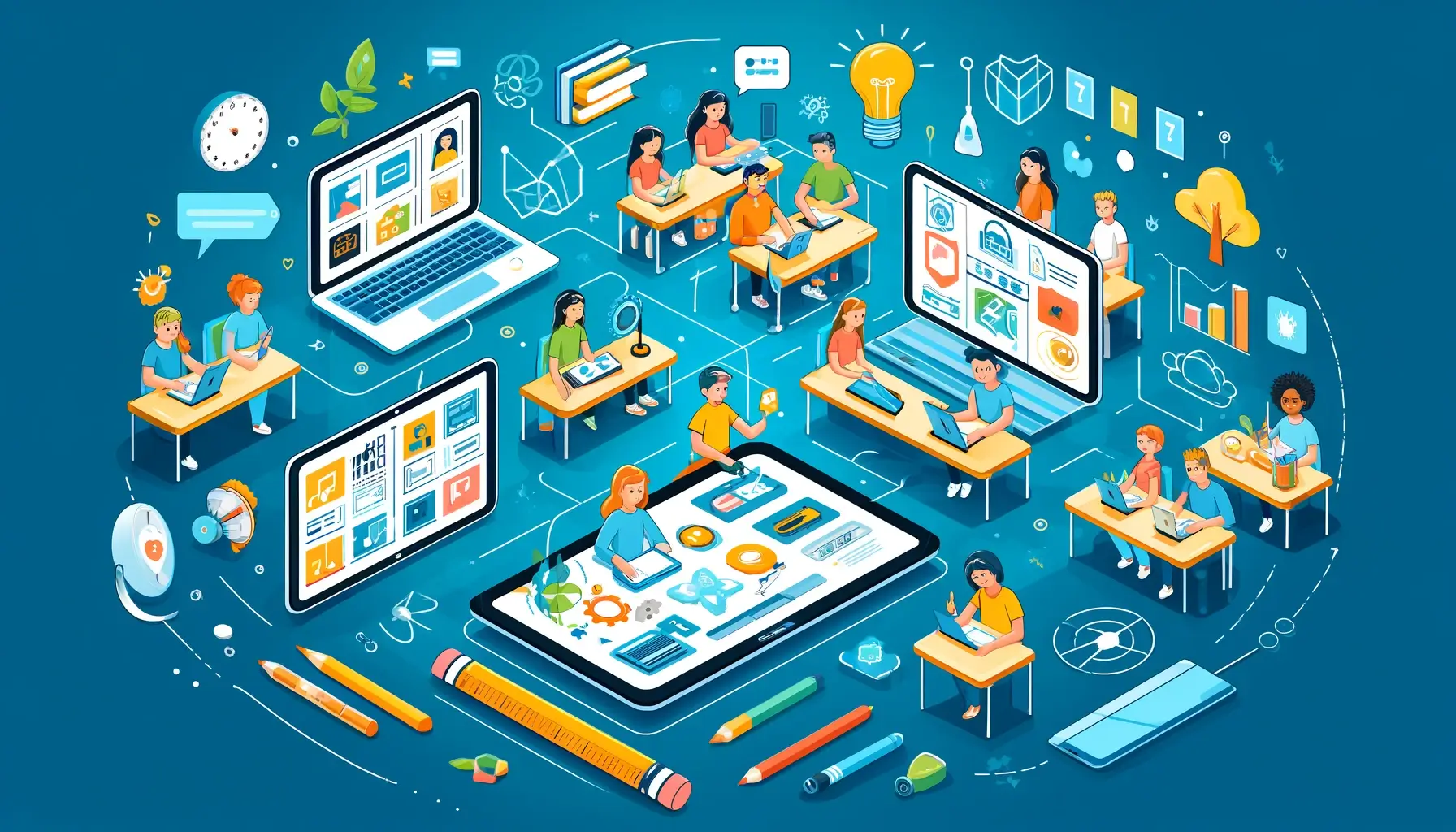
The core of personalization with educational technology is how it shapes and adapts to the needs and fancies of each individual learner. The above personalization does not focus solely on students with varied learning styles but rather zeroes down on creating a learning ecosystem that supports pace, interests, and learning goals set by a single individual student in such a way that it is made more inclusive, efficient, and successful.
Tailored Learning Paths
At the heart of personalized learning is the creation of tailored learning paths. Unlike the traditional models of education, in which the curriculum is uniform, static, and very linear in nature, a personalized learning path is one that is dynamic and fluid, constantly being redefined in real time as the learner exhibits their progress and strengths, and subsequently, the areas that need to be improved.
This much-needed flexibility will, therefore, ensure that learners are not subjected to material that is too easy, making them get bored, or content that is very hard and makes them get discouraged.
Customized Content and Resources
Even the personalization reaches the resources and content being made available to learners. The learning habits, preference, and performance of the individual are analyzed by machine learning algorithms, which makes it possible to recommend to the learner the most suitable resources. These may be from interactive multimedia content for the visual learner to deep readings that may favor the textual information enthusiasts, thus each learner has the best of material at their disposal.
Flexible Learning Environments
It gets to the extent of considering the learning environment itself: with technology, learners are not confined to physically attending a class.
This will enable them to learn in areas where they are comfortable, be it at home, in a restaurant, or library, and still in the process undertake mobile learning. This further enhances the learning experience, making education accessible and convenient to learners.
Interactive and Engaging Learning
This will contribute to bringing the level of interactivity and engagement in education to an incomparable level. With gamified learning experiences, interactive simulations, and real-world problem-solving projects, everything is geared towards meeting the interests of the learner and even the aspirations of that person: from pure aesthetic pleasure in learning something new to providing the greatest value of making an impact in the real world.
Continuous Feedback and Assessment
On the other hand, personalized educational technology allows an unending loop of feedback and assessment. What he means to say is learners receive instant actionable feedback on performance, thus they get to know how they are progressing, and the parts that need more focus. Educators get valuable information on the learning process of each student and provide support in a more focused manner.
Preparing for a Diverse World
Prepared with educational technology, personalized to fit learning styles, background, and ability level, students learn how to operate in a diversified and globalized world. It will further allow the learners to cultivate inclusion and respect for the many kinds of individual diversities; at the same time, they become empathetic and understand living within global contexts. Personalized educational technology is working on changing the pattern of learning to be even more adaptive, inclusive, and effective. With every such stride, we draw closer to the reality that education ceases to be a monologue and instead transforms into an interactive journey, responsive to the questions, passions, ideas, and aspirations of every learner.
ML Personalized Learning: Case Studies
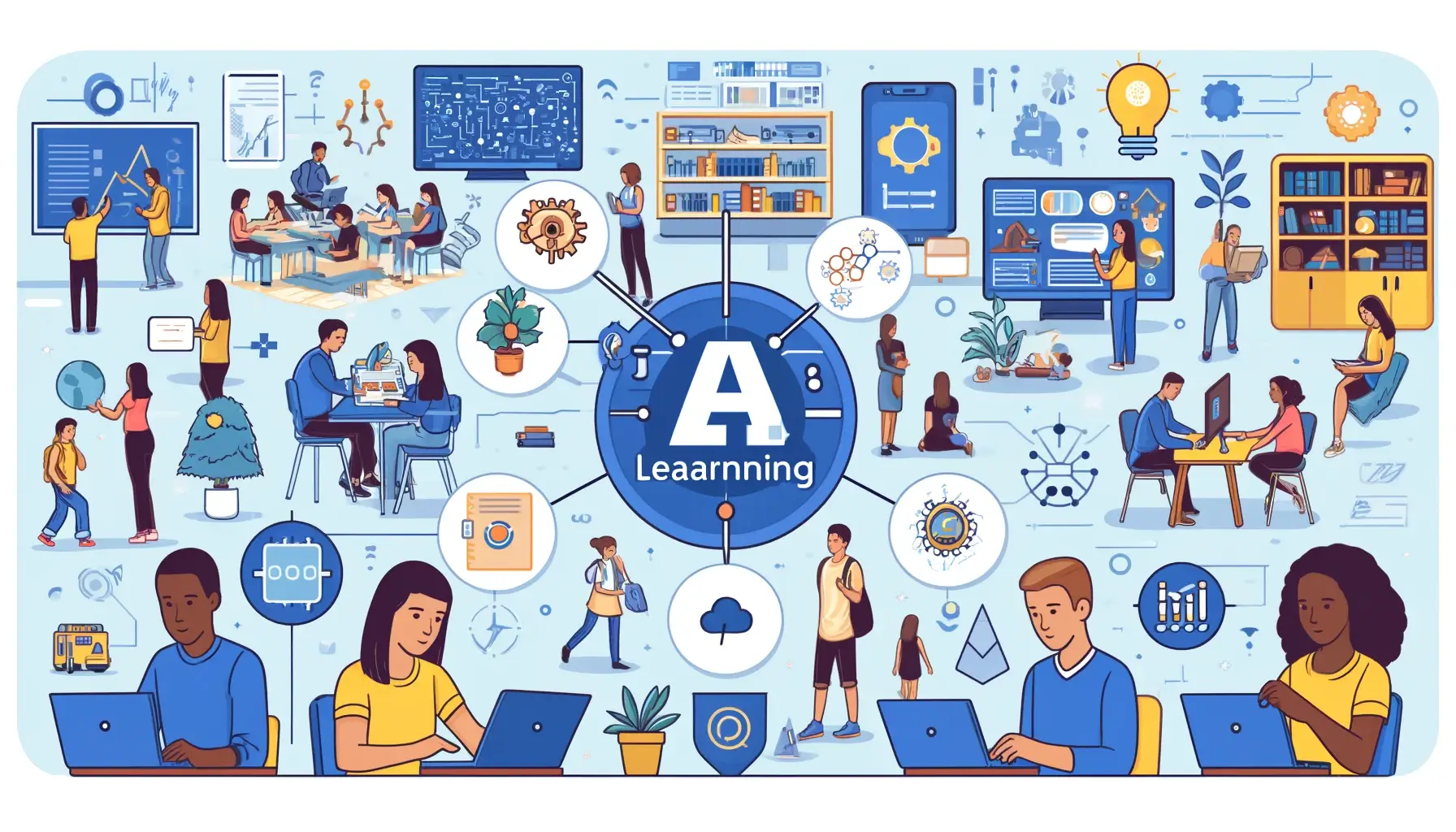
The best way to illustrate how machine learning (ML) is being transformative in enabling domain-agnostic education personalization may be with real-world applications and case studies. These stories will show nothing else but practicality of ML in real life, educative settings, and how it affects learning experience and outcomes for students. Let’s see a few such case studies, which set a precedent with the successful integration of ML in educational technology for personalized learning.
Case Study 1: Adaptive Learning Platforms
Some of these eminent examples of such platforms include an adaptive learning platform developed by one of the online education leaders and an adaptive learning platform using machine learning algorithms to scrutinize real-time patterns of students’ learning, thus gauging areas of strength and weaknesses. On the level of interactions, it gajsonal personal responses and the level of engagement, dynamically adapting with the content complexity and the type of content that is presented to a given learner in order to ensure he or she is optimally challenged.
This trend has resulted in a significant improvement in the level of student involvement in the mastering of such complex subject areas, and many of them have been able to reach their educational goals much more promptly and with more efficiency than if they followed the traditional way.
Case Study 2: Language Learning Apps
But in the language learning field, apps powered by ML have come far in the provision of tailor-made learning, and one of the famous apps is deploying machine learning into making exercises for the vocabulary and grammar of the user according to his proficiency and speed of learning.
It learns from the user’s responses, setting up a pattern for mistakes done so that future lessons are adapted to those specific trouble spots. They have, in fact, even received feedback from users of the app that they are learning faster and enjoy using the app for the same, implying the benefits of personalized, technology-driven education.
Case Study 3: Personalized Math Tutoring Program
In a much impactful sense, ML has been used in the field of education through software for math tutorials, which many schools are using. The software utilizes machine learning to produce an individual learning path for every student and then continues to adapt this path in real time according to the performance of the individual student.
The result has shown how there could be a constant increase in the student’s maths scores and a decrease in math anxiety, which has gone significantly lower, thereby showcasing how personalized learning could help one individual meet challenges and bring about academic success.
Case Study 4: Interactive Science Modules
Middle School series is an interdisciplinary set of modules, interactive in nature, making use of machine-learning technology. This can be from modules encompassing biology to physics topics and is meant to engage the student via interactive simulations and quizzes along the length of the material.
The machine learning algorithms will look at the student’s interaction with modules and make content adjustment dynamically to provide him/her with an intelligible challenge. This approach has resulted in a higher number of students’ retention rates and a deeper understanding of scientific concepts at the conceptual level by students.
The Impact of Personalization These case studies underscore the deep effect of ML in personalizing the content and approaches to education. In collaboration with content personalization and a targeted approach for the learning method, the ML-powered educational technologies are moving notches up for improved learning outputs, making them more inclusive and reachable for all the students.
The promising success stories of so many adaptive learning platforms, language apps, personalized tutoring programs, and interactive modules could all be summarized in this final section: the potential of machine learning to revolutionize education, making it even more responsive, engaging, and effective for students around the globe. And as we see these developments, in the future, it will be very apparent that the place of education does, in fact, use technology such as ML to create new individualized adaptive educational experiences that are going to be able to help the learner in their own manner.
AI and ML in Enhancing Learning Experiences
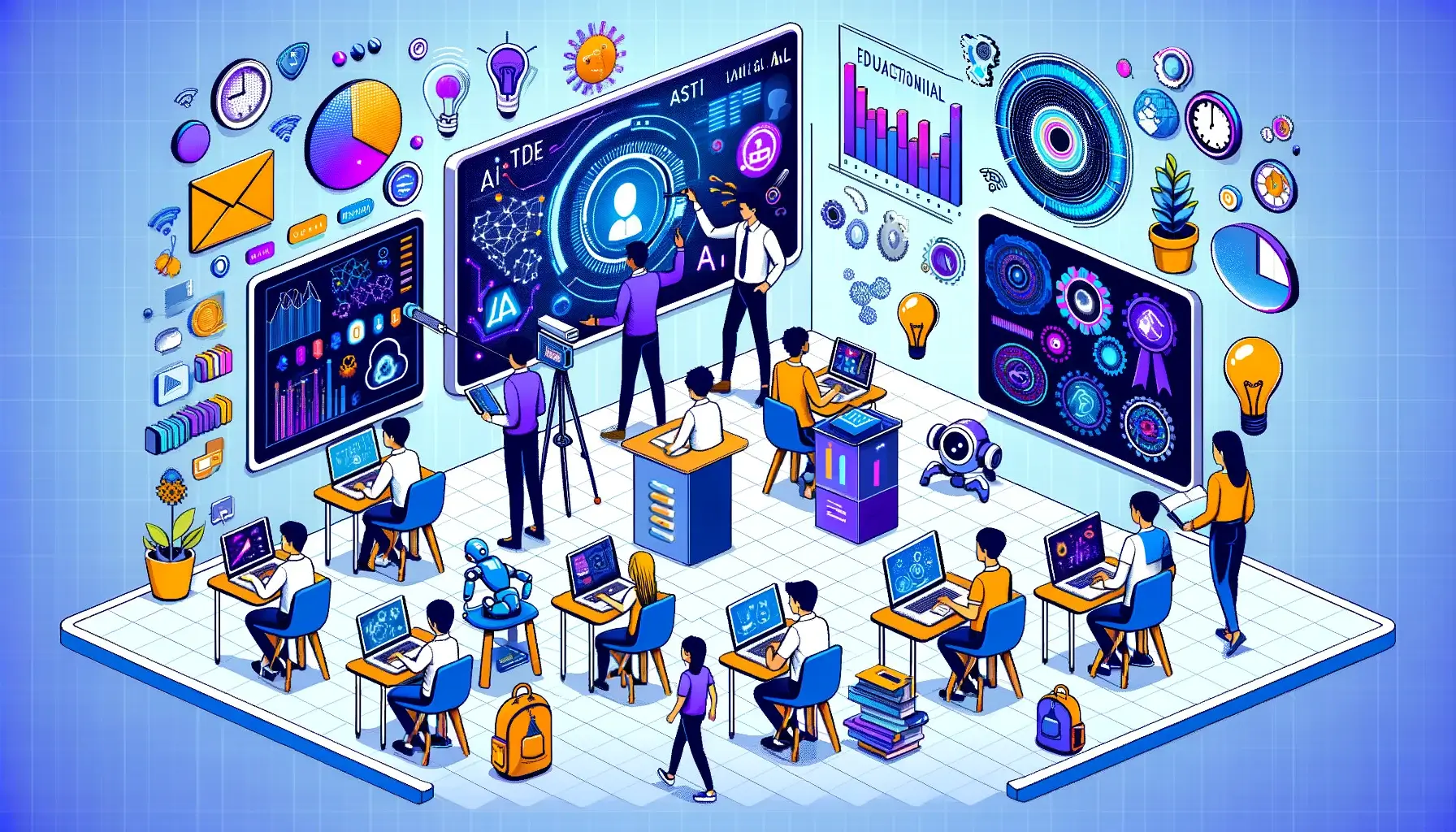
Education is now at the stage where its leveraging Artificial Intelligence (AI) and Machine Learning (ML) would allude to the dawn of a complete new era for more interactive, engaging, and personalized learning experiences. In fact, such technologies not only support the traditional methods of learning but also, in the most basic sense, change the fabric of how education is delivered by making it more flexible, immersive, and individual to the learner.
Interactive Learning Environments Interactive learning environments that would literally grab the attention of the students and take the students into a world of their own to learn would need AI and ML at the helm. Smartboards and digital classrooms, powered by AI-driven content, designed to adjust teaching strategies based on student feedback to ensure that every lesson is taught, not preached, in class.
This would further allow room for interactive settings, thus guaranteeing that the participants take part in active, critical, and collaborative problem-solving, making it more active and fun.
Virtual Reality and Simulations
Virtual Reality (VR) and Simulations powered with AI and ML provide experiential learning to students never thought of before. From letting students discover the field of work in history classrooms to actually performing experiments in chemistry, the reality provides firsthand experiences that can most often understand the complex concepts and help with memory retention. The majority of these virtual environments enable students to apply acquired theoretical knowledge in practice in a simulation of the real environment—these would otherwise not be possible for students without access to the field.
Personalized Learning Assistants
AI-powered personalized learning assistants are, in all senses of the expression, able to redefine the very way students view support and guidance. Intelligent systems may include personalized tutoring, recommendations for learner resources, and feedback about learner preferences, such loyalties, and learning styles.
On the other hand, AI personal assistants with 24/7 available support to students ensure that learners do not miss getting the help whenever they need it, hence making learning easy and accessible to them.
Adaptive Assessments Adaption and personalization of learning assessments have been redefined by using the machine learning algorithm. In comparison to the traditionally more fairly administered tests and exams, which were fairly administered to all students in the same way, adaptive assessments offer adjustments in the difficulty based on learner performance and more effectively, therefore, point toward the accurate reflection of student knowledge and competencies. This approach notjson not onlyreduce anxieties associated with assessments but also allow valuable insightjson into feedback on individual learning paths and progress.
Preparing for the Future
AI and ML being integrated into education gear up the students toward technology-driven futures. Tools and platforms driven by AI ensure that students learn to interface not just in the knowledge area of the subject itself but also in acquiring important digital literacy. It is, therefore, the ability to make decisions, having creativity, innovativeness, and taking initiative that will be very key in the future employment market where technological know-how will be key to one’s success.
The role of AI and ML in enhancing learning experiences is profound, offering a glimpse into the future of education. They tend to provide personalized, interactive, and immersive learning environments that address all the varied needs of learners, hence are highly effective and fun in knowledge acquisition. As such, the potential for AI and ML in the field of education seems to be unending. The day does not seem far when this application will transform into an empowerment tool with much more benefits for both the learner and educator, hence promoting much more inclusiveness in the educational landscape along with innovation.
Machine Learning Educational Apps
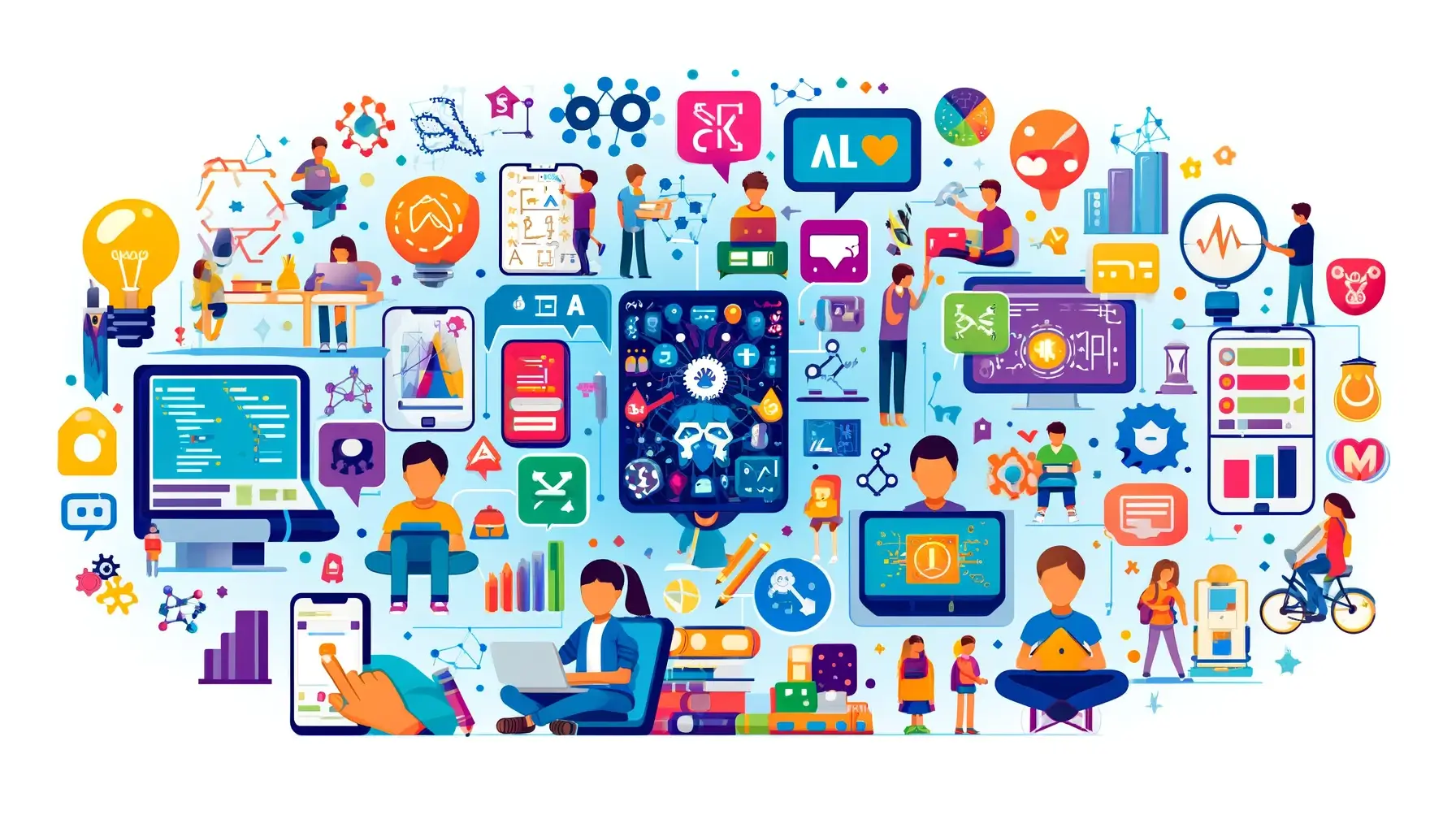
This will be equivalent to the emergence of machine learning (ML) education apps on the road to personalized, interactive learning. Advanced algorithms and data analytics empower the apps with capabilities that can turn your smartphones, tablets, or laptops into personalized educational experiences in dynamic learning tools over a wide spectrum of subjects.
Diverse Learning Subjects
The use in the field of machine learning education involves everything from mathematics and science to learning foreign languages and even computer programming. What is more, all the apps apply ML algorithms to adjust content and teaching methodology to the proficiency, pace, and preferences of a person who learns. This personalization will imply that the learners do not find it boring to be introduced to content that might be too easy for them and, at the same time, they are not thrown in the deep.
Interactive and Engaging Content
One of the hallmarks of ML-powered educational apps is their interactive and engaging content. They are most helpful when students apply them to solving complex mathematical problems, learning a new language, conducting virtual science experiments, or even writing code for the various digital projects that need to be developed.
Elements of gamification, such as rewards and challenges, provide an added motivation and fun factor to the learning.
Adaptive Learning Paths
All this has been made possible by development with machine-learning algorithms, which allows educational apps to build an adaptive learning path for each of its users. The interaction of the user and performance data is analyzed to find strengths, weaknesses, patterns, and the content changes in difficulty up to the material needed.
This adaptive approach ensures that each student’s learning journey is as unique as their individual needs and goals.
Real-Time Feedback and Support
Instant feedback is among the prime mechanisms of learning, and educational apps through ML stand at par when it comes to personalized and immediate feedback. When the students answer a question either right or wrong or when they complete learning something, the app will provide immediate feedback or ways to do it better, promoting support and responsive learning.
Accessibility and Convenience
That’s how ML educational apps easily contribute to making learning much more convenient, accessible, and on the move. Further, learning through applications allows portability, i.e., access to learning from any location by the student using the existing daily device, thus being highly flexible. This, in turn, means additional flexibility for the learners who could be otherwise disadvantaged in accessing the traditional educational resource base.
Preparing Students for the Future This, combined with machine learning and data analytics, is what sees these apps revolutionizing the learning experience while, at the same time, preparing learners for an all-different future that increasingly is about digital literacy and technological acumen.
This means the use of apps powered by ML will, in turn, inculcate a sense of critical thinking, problem-solving, and tech-savvy skills among students without their knowledge. Machine learning educational apps are redefining what it means to learn in the 21st century. Such apps empower students to take control and shape their education by delivering a highly personalized, interactive, and inclusive learning experience. We will go on to innovate and enhance development in educational technologies, with its potentials unbounded, to continue making learning experiences more personalized.
Challenges and Ethical Considerations
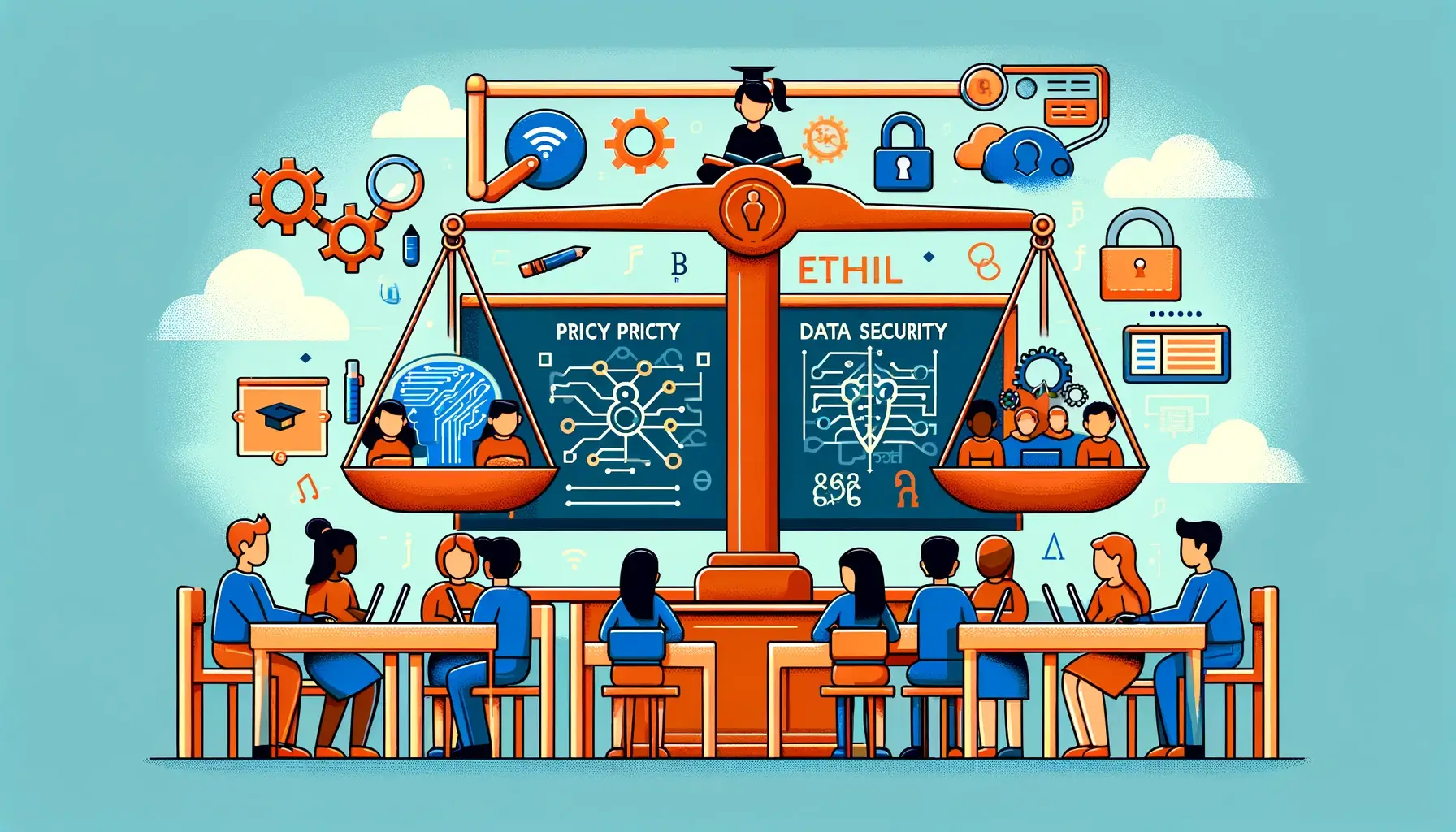
The opportunities within learning improvements and personalization are numerous when ML is integrated into education. However, such integration is not free from any of the challenges or ethical considerations that may come with it. Hence, it is an important task that the advantages, particularly of ML in education, are being used responsibly and equitably amidst these swirling dynamics.
Data Privacy and Security
First, there is the issue of privacy and security of the students’ data. Big ML algorithms require huge datasets for operation, hence calling into question the nature of how such data is created, stored, and used. This calls for ensuring there is information of the student kept confidential and integral, which has to be laid down by stringent measures in data protection and transparency in the process of data handling.
Bias and Fairness
The possible biases in ML algorithms also give rise to important problems. These biases may be due to the fact that ML algorithms are trained on data that represents a biased model of the world and, as a consequence, they can return unfair or discriminatory results.
Ensuring fairness in ML would mean identifying and removing every type of bias to make the educational technologies inclusive and just for all students.
Equity of Access
It is an equity issue which raises its head beyond algorithmic fairness to actual access to technology-driven education. All learners are not exposed to the devices and connectivity required to derive benefits from ML-powered educational tools. This makes it a necessity that this digital divide be bridged, such that it doesn’t widen the already existing educational inequalities.
Dependence on Technology
The more these educational technologies become intrinsic to the learning process, the more the risk is that of overreliance on the crutches. It is important that a middle ground be struck between the use of technology and traditional methods of teaching and interpersonal interactions in cases where the goal is all-round education, appreciating human judgment as much as technology.
Ethical Use of AI
The ethical use of AI in education also involves considering the long-term impacts on learning and development.
Responsibility for much of the deployment of these technologies centers on questions of how much autonomy should be given to AI systems in educational settings and the consequences of such autonomy on the student’s ability to self-regulate and develop critical thinking skills.
Developing Guidelines and Policies To meet these challenges, comprehensive guideline development, policies, even ethical frameworks for the governance of the use of ML in education require being met. In essence, they shall have to be developed with the educators, technologists, policy-makers, and others so that they reflect the perspectives and value of all people, one way or another.
The boundaries of machine learning in education are a complex web of challenges and ethical considerations that must be navigated judiciously. However, responding proactively to these, the benefits from ML can empower our educational outcomes without setting aside our principles of privacy, fairness, equity, and ethical responsibility.
Conclusion
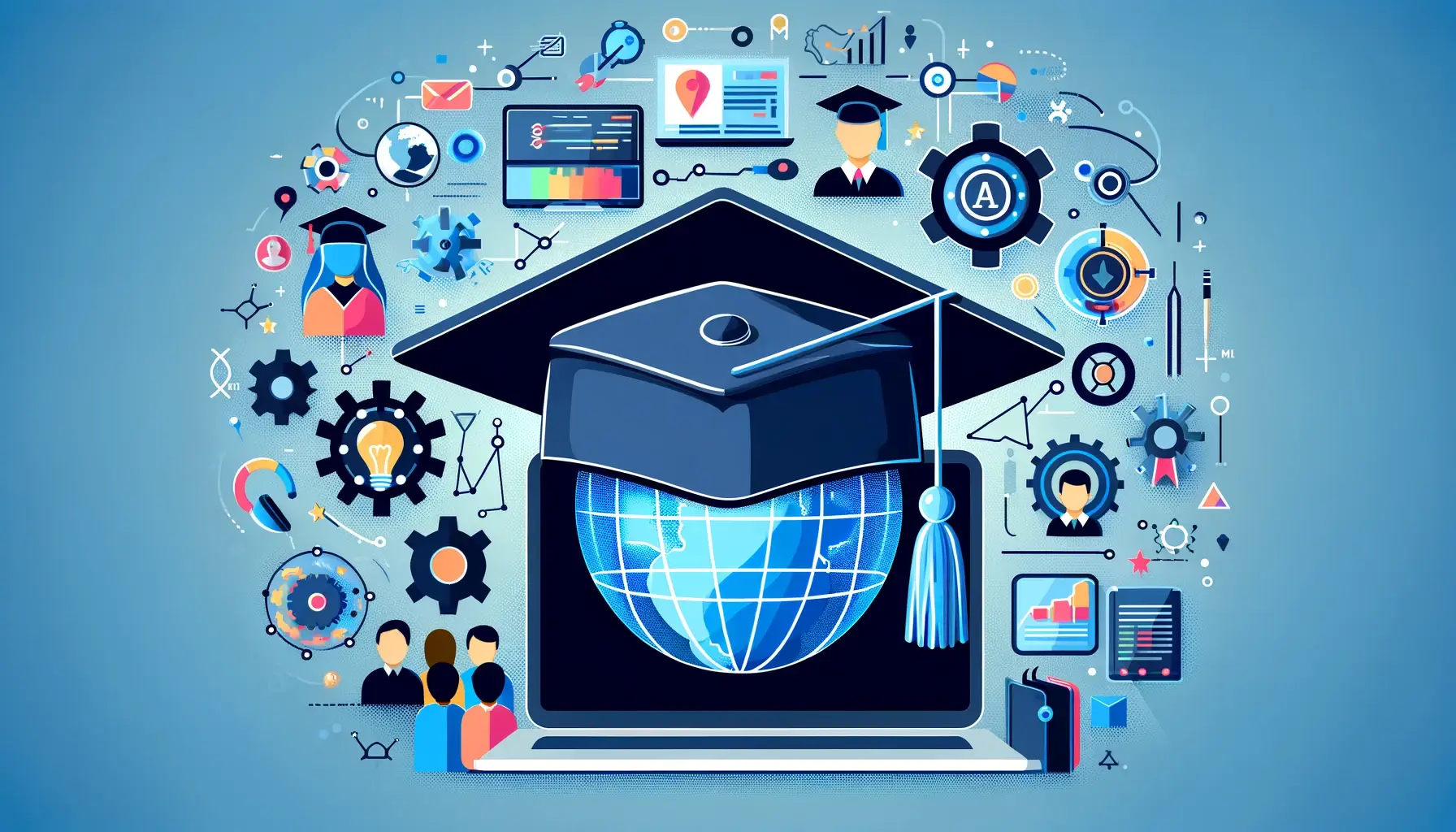
At the confluence of education and technology, the possibilities of machine learning (ML) integration with educative practices open up a personalized vista to more interactive learning. What we have been part of is a journey transformative in breaking down traditional barriers and forging new pathways that very specifically cater to the individual needs of each learner. What if I say that potential, which ML withholds of personalized learning to make it more engaging, effective, and accessible, is not promising but is coming into existence?
Case studies and examples spotlighted in this exploration, therefore, draw a very clear line on the benefits of personalized learning through ML in education. From adaptive learning platforms adjusting to each student’s pace, to language applications that make the learning of a new tongue much more achievable, the reach of ML is truly deep.
These developments are not only redefining the experience of education but what we understand with learning to be an all-inclusive, equitable, and enjoyable journey.
Looking Ahead
In the future, machine learning will be one of the important aspects of education, as AI development is progressing with an improvement in data analytics. It is a great amount of challenges and ethical consideration which demands our due attention and thoughtful action. On the other hand, the promise of inspiring one to create something more personalized, engaging, and easily accessible in the realm of global learning experiences for all students is quite inspiring.
The way forward is collaborative; it urges that educators, technologists, policymakers, and the students themselves shape the future of this technology together. This is a vision where all the fruit of learning from textbooks and classrooms has been taken up and put to use at every stage and towards the lifelong journey, empowered by technology on a path unique to each learner and available to all.
Call to Action
It is from this light of innovativeness and inclusiveness that we welcome you to unveil the magic that machine learning will bring into the educational landscape. And for the educator who would like to build better teaching approaches or the developer who would like to develop educational technologies, or to put it more generally, the student who would like to take over the practice in the learning process—the future is bright for any one of them.
DM WebSoft LLP is dedicated to building pioneering solutions that unleash the power of ML in revolutionizing education. We would like to invite you to be part of this exhilarating journey to empower educational technology for a brighter, better-aided, personalized, and inclusive future for learners around the world.
Help us carve out a future for education in which technology leverages to meet learners’ ever-diverging requirements and aspirations across the world. Let’s join hands in making this paradigm shift with optimism and joint commitments toward innovation and inclusiveness in education.
Thank you for joining us today as we look into the exciting and rapidly growing world of applying machine learning in education. Together, let’s move forward in this very exciting new frontier.
In education, machine learning is the use of AI algorithms in creating learning adaptive and personalized learning experiences. In other words, this makes the educational content and the path dynamically adjusted with the individual needs and preferences of the learners in real time.
ML methods help in personalizing the learning process. ML helps in the analysis of much data in relation to the student’s learning behavior, preference, and performance, then with this analysis, it personalizes the learning material to be studied, the level of difficulty of learning, and the learning path to each student’s individual learning style and rhythm.
Examples include adaptive learning platforms, content that is produced depending on the learner’s performance, language learning apps, and math tutoring programs that adapt to the learners’ proficiency level and generate some exercises or challenges for them.
Yes, the major ethical issues would be safeguarding privacy and securing student data, avoiding bias in ML algorithms, and providing fair chances for access to technology-based education and a balance between AI uses and human intervention or conventional means of learning.
First, educators should start with exploring ML-powered tools and platforms appropriate to their teaching goals, taking up relevant professional development on educational technologies, and consulting with tech experts who can guide them to integrate ML solutions amicable to their pedagogy.
Get Started Now !
What’s the Process ?
Request a Call
Consultation Meeting
Crafting a Tailored Proposal
Get Started Now !
Real Stories, Real Results. Discover What Our Clients Say

Working with DM WebSoft LLP was a game-changer for our business. Their technical prowess and innovative solutions transformed our online presence. A highly recommended web development agency with a stellar track record.

We are thrilled with the results DM WebSoft LLP delivered. Their deep understanding of web development coupled with years of expertise ensured a seamless and visually stunning website. True professionals!

In a digital age where first impressions matter, DM WebSoft LLP crafted a website that speaks volumes. The team’s attention to detail and commitment to quality set them apart. Thank you for making our vision a reality.

DM WebSoft LLP’s team demonstrated unparalleled expertise. Their ability to navigate complex technical challenges with ease is truly commendable. Choosing them for our web development needs was the best decision.

Exceptional service, unmatched skills! DM WebSoft LLP stands out as a leading web development agency. Their collaborative approach and commitment to excellence make them our go-to partner for all things web-related.

DM WebSoft LLP turned our ideas into a digital masterpiece. The seamless communication and timely delivery of our project showcased their professionalism. Highly impressed with the level of creativity and skill.

Our experience with DM WebSoft LLP was nothing short of amazing. From concept to execution, their team provided top-notch web development services. A reliable partner for businesses looking to elevate their online presence.

DM WebSoft LLP’s team of tech experts is second to none. Their wealth of experience reflects in the quality of their work. Our website not only meets but exceeds industry standards, thanks to their dedication.

Choosing DM WebSoft LLP was the best investment for our web development needs. Their team’s proficiency, coupled with a customer-centric approach, made the entire process smooth and enjoyable. A pleasure to work with!

